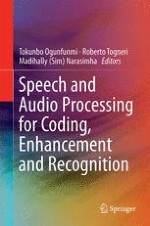2015 | OriginalPaper | Buchkapitel
6. Deep Dynamic Models for Learning Hidden Representations of Speech Features
verfasst von : Li Deng, Roberto Togneri
Erschienen in: Speech and Audio Processing for Coding, Enhancement and Recognition
Verlag: Springer New York
Aktivieren Sie unsere intelligente Suche, um passende Fachinhalte oder Patente zu finden.
Wählen Sie Textabschnitte aus um mit Künstlicher Intelligenz passenden Patente zu finden. powered by
Markieren Sie Textabschnitte, um KI-gestützt weitere passende Inhalte zu finden. powered by
